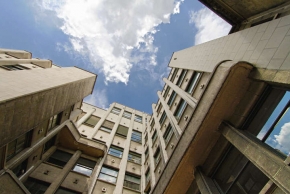Margaux Calice and Julien Ballbé present their work at the Borelli@Saints-Pères seminar.
Margaux Calice
Title: A theoretical multiscale examination of visual spatial attention in mouse cerebral cortex
Abstract: In order to understand how complex cognitive functions are implemented in the brain, It is necessary to use a multi-scale approach. With this strategy in mind, the RisingNet (whole-bRaIn rodent SpikING neural NETworks) project seeks to develop a computational method to generate a full-scale scaffold model of the rodent brain. Therefore I will present a method that aims to reconstruct at the network level the cortical areas of the mouse brain. This method will then make it possible to study cognitive functions in an attempt to highlight how they are implemented at a large scale in the cerebral cortex of mice. I will focus on visual spatial attention, a cognitive function that has yet to be extensively studied in mice despite being an emerging model in the study of the visual system. Indeed, much remains to be discovered on this subject, particularly on the involvement of multiple cortical areas, and the way they communicate with each other in this particular context.
Julien Ballbé
Title: Development and validation of a cerebral cortex spiking neuron model of the mouse
Abstract: While a diversity of computational mechanisms are well explained at specific spatial scales (from subcellular mechanisms like neurotransmitter release, to cognitive functions implicating whole neuronal circuits), the links between the different spatial scales, and how higher-level computational properties emerge from their interaction is still poorly understood. To this end, the development of a multi-scale spiking whole brain model would unveil the interaction mechanisms between different neuronal scales. Therefore, the implementation of reduced-cell models of cortical neurons able to account for their biophysical properties is essential. Such model should account for the multiple aspects of neuron’s I/O relationship (i.e. Gain, Threshold, Saturation…).
Moreover, by leveraging on the laboratory’s database of electrophysiological recordings, this model will account for the dependance of neuronal I/O features on synaptic inhibition, which has been known to play an essential role in brain’s computational properties.
Therefore the electrophysiological characterization of cortical neurons has a important place. In this context, my work will contribute to the establishment of a common data extraction pipeline, which will allow us to take advantage of the recent publication of different databases of electrophysiological recording. To this purpose we also need to develop a new method to reliably measure, compare and correlate biophysical neuronal properties measure in different experimental protocol configuration (current-based and conductance-based). Together, these data will allow to establish a feature-based, protocol-independent mapping of cells' responses across different databases, in order to establish a cell model taking into account the various aspects of the neuron I/O relationship with respect to cell’s specificities (i.e.: cortical area, layer,…), and their dependance on synaptic inhibition.
